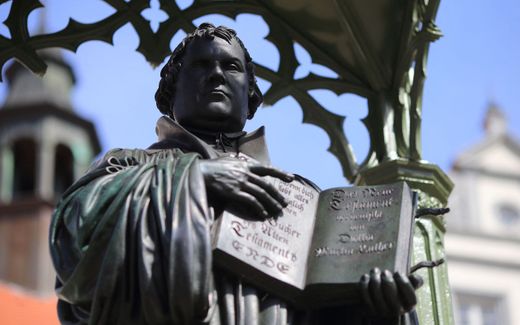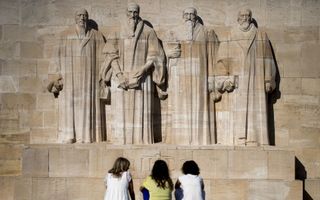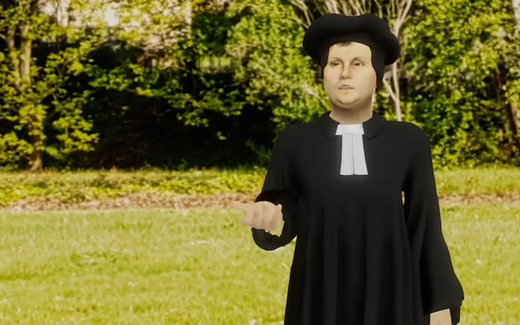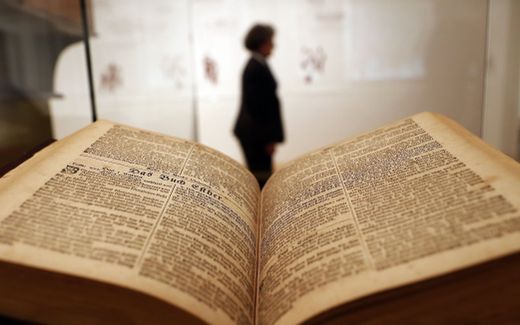Staupitz showed Luther the way, but then disappeared
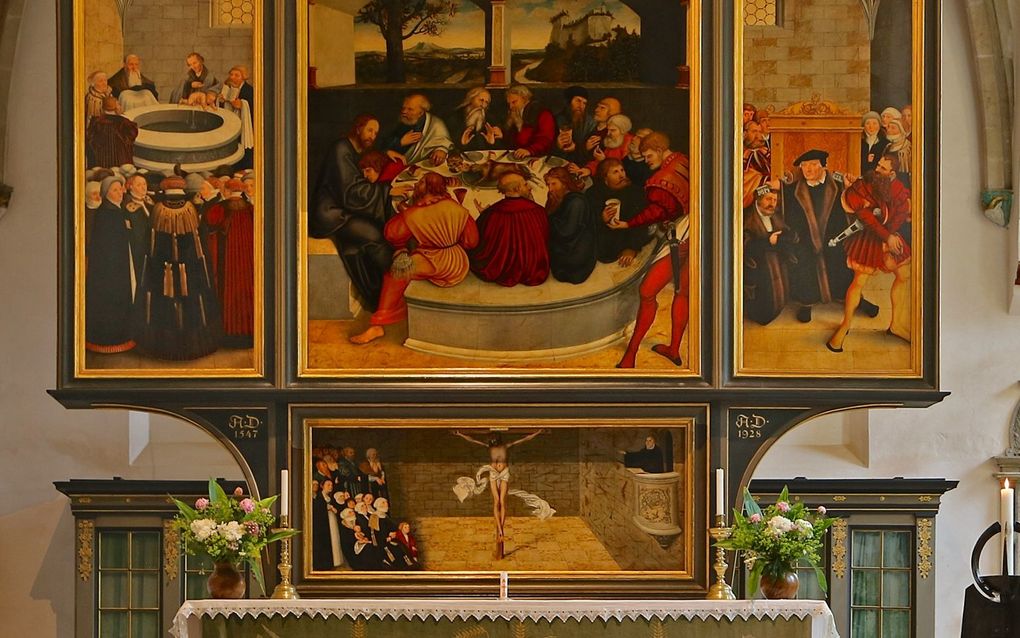
Altarpiece by Lucas Cranach the Elder in the City Church in Wittenberg. Photo Wikimedia, W. Bulach
Christian Life
When Martin Luther wrestled with God and His justice, there was one man who understood him: Johann von Staupitz. His name appears in all books about Luther. But what do we know more? Well, that he tried to reform the Catholic Church from within, but soon after his death, his books were forbidden and burned
Stay up to date with Christian news in Europe? Sign up for CNE's newsletter.
Luther never intended a break with the Church, nor did he think his 'new' theology was his invention. In his view, his confessor Johann von Staupitz had handed him “all my things” ('all mein ding'). It was Staupitz who had instigated the new doctrine. And besides that, Staupitz had been of enormous importance to Luther personally. “If it had not been for Dr. Staupitz, I should have sunk in hell”, he wrote.
Curiously enough, this important theologian –for Luther the forerunner of his Reformation– has remained somewhat obscure. Who was he? What do we know about his theology and spirituality? And was Luther right when he honoured him as the man who was the first to discover the Reformed doctrine of the justification of the impious?

We discuss these questions with Professor Markus Wriedt (1958), who recently retired as a professor of Church History at Goethe University in Frankfurt. He wrote his PhD about Staupitz in 1991 (Gnade und Erwählung: Eine Untersuchung zu Johann von Staupitz und Martin Luther [Grace and Election: A Study into Johann von Staupitz and Martin Luther]) and has been studying Staupitz's life and works ever since.
Lonely
In 1506, Luther and Staupitz first met in Erfurt. Luther was going through a critical period in his spiritual life. He was anxious and lonely, plagued by persistent thoughts about his sinfulness, and confessed his sins to Staupitz. They hit it off right away. Staupitz trained him, and in 1512, he entrusted Luther with the chair in biblical theology.
“Staupitz was an impressive person”, Markus Wriedt tells us. “Theologically, he was an eclectic, combining scholastic, Augustinian and Biblical strains of thought. He guided Luther into Scripture and taught him to focus on God's grace. He pointed Luther to salvation through the blood of Christ.”
Wriedt tells that Staupitz pointed Luther to the crucifix. “He blamed Luther for not surrendering to the merits of Christ's suffering and death. Luther, so Staupitz told him, actually said to Christ: "It is very impressive what you did, but it is not enough". This advice from his confessor eventually convinced Luther and contributed to his "Turmerlebnis", his discovery of justification by faith alone.”
It is virtually impossible to give an exact date of Luther's Reformation breakthrough, as it is with the circumstances of his posting the 95 Theses. “We must not forget that within the community of the University of Wittenberg, there was an atmosphere of discussion and dispute. Luther's colleagues Andreas Karlstad and Johann Lang also published theses, Karlstadt on one occasion 157. When, later in life, Luther wrote about his sudden and unexpected discoveries, he may have compressed his memories and centred rather long developments into one particular moment.”

Do Luther's confessions of his dependence on Staupitz mean that Luther was right in naming Staupitz as the man to whom he owed his theological discoveries?
“It is difficult to assess Staupitz' theology”, according to Wriedt, precisely. “We know Staupitz was a very pious man –though not a mystic– a sensitive preacher who excelled in pastoral care. But we do not have his original scripts.
In 1555, his publications landed on the Index of Forbidden Books, and all his manuscripts were burned. We have sermons written down by a secretary and printed afterwards. His book on predestination, for example, results from a series of sermons he preached in Nürnberg that were later entrusted to paper after they had been translated into Latin.
Moreover, there are only very few references to the sources he used. In his book on predestination, there are only two references to Augustine. He wanted to interpret the Bible's text and confront his listeners and readers with the Biblical message.
So historically, we do not have what we want to have, so it is very difficult to label his theology.”
However, we can say that Staupitz sent Luther on track, Wriedt continues. “He showed him the way to his Reformation breakthrough. Obviously, without that intention but by insisting on the importance of Christ's sacrifice. He understood what Luther was going through, although he believed Luther exaggerated his sense of sin and guilt.
Staupitz, for example, recommended the reading of the Theologia Deutsch to Luther – a late medieval mystical text, anonymously published, which strengthened Luther in his conviction that theology is a matter of the heart and should be expressed in the vernacular. Staupitz influenced Luther's lectures on Romans in 1515/1516, though we do not know exactly how. The instigations are found hidden between the lines. In his latest writings on the grace of God, printed in 1525, one year after his death, Staupitz stressed the gratuity of God's grace and protested against the scholastic doctrine of merit.”
Clear position
Despite their close relationship, Staupitz did not follow Luther when he got into conflict with the Church and was expelled. Wierdt: “He never took a clear position in this conflict. He stayed within the Roman Church.
Staupitz was convinced that Luther himself did not force this breach. The curia threw him out. Luther was his disciple, so it caused much pain that he was expelled. But for him, a split was impossible.
After Luther's excommunication, Staupitz stepped back. When offered Bavaria's bishopric, he refused to publicly condemn his friend and former student. After Staupitz departed from Wittenberg, Luther sent some letters to him, but as far as we know, Staupitz did not answer them. So a lot remains hidden in the fog of history.”
“It is preferable, I believe, not to label Staupitz as a forerunner of the Reformation but as a front-runner of the Catholic Reformation – which is the title of a compelling book by my colleague Franz Posset. The concept of "forerunner" is anachronistic. Staupitz had no idea of a Reformation. His task, he believed, was to console individuals.
Nevertheless, Luther was convinced that Staupitz had lit the candle of the Gospel in his heart and that he had shot an arrow that was to remain in his innermost self for the rest of his life.”
Biography
Johann von Staupitz (1465-1524) was born in Motterwitz (near Leipzig) in a family of old Saxon nobility.
It is interesting to know that his sister Magdalena belonged to the group of nine nuns that fled the monastery they lived in after the Reformation – Luther's future wife Katharina von Bora was also one of them.
Staupitz studied in Cologne (bachelor in 1484) and Leipzig (master of arts, 1489). In 1490, he was accepted into the Augustinian order of friars in Munich before being transferred to Tübingen, where he was eventually promoted to the rank of prior. In 1500, Staupitz was made a Doctor of Theology and three years later, he was elected to the post of Vicar General of the German Congregation of Augustinians.
When Frederic the Wise founded the new University of Wittenberg in 1502, Staupitz was made dean of the theological faculty. After ten years, Staupitz left Wittenberg, eventually joining the order of the Benedictines, becoming Abbot of St. Peter's in Salzburg.
He died on 28 December 1524.
Related Articles



